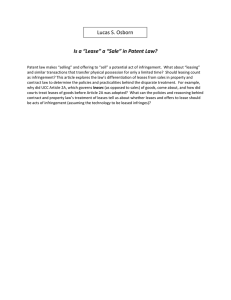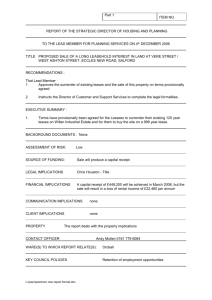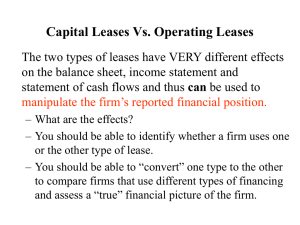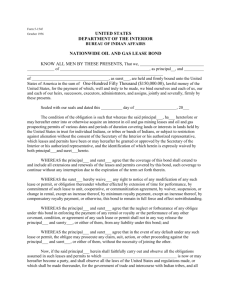Is Production Required to Maintain Flat- Pennsylvania? It Depends...
advertisement
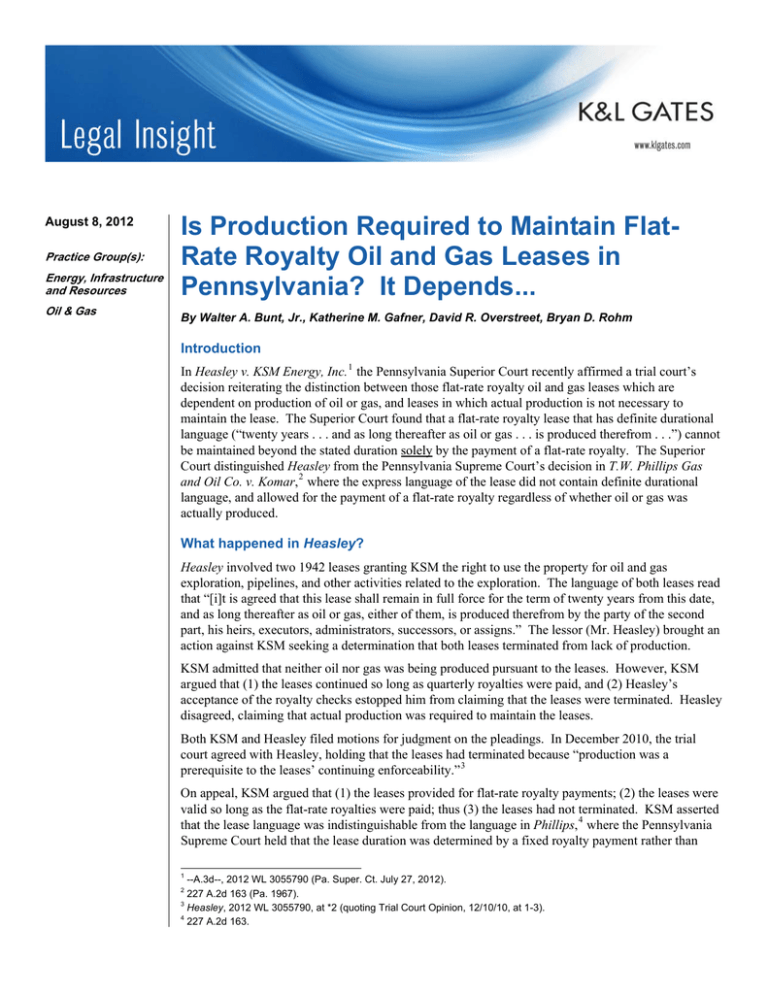
August 8, 2012 Practice Group(s): Energy, Infrastructure and Resources Oil & Gas Is Production Required to Maintain FlatRate Royalty Oil and Gas Leases in Pennsylvania? It Depends... By Walter A. Bunt, Jr., Katherine M. Gafner, David R. Overstreet, Bryan D. Rohm Introduction In Heasley v. KSM Energy, Inc. 1 the Pennsylvania Superior Court recently affirmed a trial court’s decision reiterating the distinction between those flat-rate royalty oil and gas leases which are dependent on production of oil or gas, and leases in which actual production is not necessary to maintain the lease. The Superior Court found that a flat-rate royalty lease that has definite durational language (“twenty years . . . and as long thereafter as oil or gas . . . is produced therefrom . . .”) cannot be maintained beyond the stated duration solely by the payment of a flat-rate royalty. The Superior Court distinguished Heasley from the Pennsylvania Supreme Court’s decision in T.W. Phillips Gas and Oil Co. v. Komar, 2 where the express language of the lease did not contain definite durational language, and allowed for the payment of a flat-rate royalty regardless of whether oil or gas was actually produced. What happened in Heasley? Heasley involved two 1942 leases granting KSM the right to use the property for oil and gas exploration, pipelines, and other activities related to the exploration. The language of both leases read that “[i]t is agreed that this lease shall remain in full force for the term of twenty years from this date, and as long thereafter as oil or gas, either of them, is produced therefrom by the party of the second part, his heirs, executors, administrators, successors, or assigns.” The lessor (Mr. Heasley) brought an action against KSM seeking a determination that both leases terminated from lack of production. KSM admitted that neither oil nor gas was being produced pursuant to the leases. However, KSM argued that (1) the leases continued so long as quarterly royalties were paid, and (2) Heasley’s acceptance of the royalty checks estopped him from claiming that the leases were terminated. Heasley disagreed, claiming that actual production was required to maintain the leases. Both KSM and Heasley filed motions for judgment on the pleadings. In December 2010, the trial court agreed with Heasley, holding that the leases had terminated because “production was a prerequisite to the leases’ continuing enforceability.” 3 On appeal, KSM argued that (1) the leases provided for flat-rate royalty payments; (2) the leases were valid so long as the flat-rate royalties were paid; thus (3) the leases had not terminated. KSM asserted that the lease language was indistinguishable from the language in Phillips, 4 where the Pennsylvania Supreme Court held that the lease duration was determined by a fixed royalty payment rather than 1 --A.3d--, 2012 WL 3055790 (Pa. Super. Ct. July 27, 2012). 227 A.2d 163 (Pa. 1967). 3 Heasley, 2012 WL 3055790, at *2 (quoting Trial Court Opinion, 12/10/10, at 1-3). 4 227 A.2d 163. 2 Is Production Required to Maintain Flat-Rate Royalty Oil and Gas Leases in Pennsylvania? It Depends... continued production. Specifically, KSM asserted that the language in Phillips (“should any well . . . produce gas in paying quantities, and the gas therefrom be sold off the said premises”) is indistinguishable from the language in its leases (“[w]hile the same be used off the premises”). 5 Because the Phillips lease and KSM’s leases were both fixed royalties and contained similar language, KSM argued that Phillips should control and the leases should be valid. What did the Superior Court decide? The Superior Court affirmed the trial court decision. In doing so, it summarized Pennsylvania’s historical approach to determining lease duration. In Pennsylvania, an oil and gas lease is interpreted based on the principles of contract law. Thus, in the absence of ambiguity, leases are construed in accordance with the plain meaning of the language as opposed to the subjective intent of the parties. With respect to duration of a lease, Pennsylvania has long held that the express language of the lease controls. 6 When the amount of a lessor’s compensation in an oil and gas lease is dependent on the volume of production, the duration of the lease is determined by the period of active production. 7 If, on the other hand, a lessor receives a fixed amount of money, independent of production volume, actual production plays no role in determining the duration of the lease, but rather the duration is calculated by the time during which the lessor receives the fixed payment. 8 The court analyzed the language in Phillips, comparing it to the Heasley leases. In Phillips, the language of the lease provided that the lessor received payment “quarterly from completion to abandonment of well.” 9 In contrast, the language of the Heasley leases provided for payment “as long thereafter as oil or gas . . . is produced therefrom” and “while gas from said well is so used.” 10 The Superior Court determined that the Heasley leases were in effect for twenty years. After the twenty year primary term, the leases could only be maintained so long as oil or gas was actually produced. 11 The lessee’s (KSM’s) obligation to tender payment continued only “while gas from said well is so used,” meaning so long as production continued. The Superior Court further agreed with the trial court that because there was no production, the relationship between the parties reverted to a tenancy at will. As such, despite accepting payment in the past, the lessor (Mr. Heasley) lawfully exercised his right to terminate the leases by deciding to refuse payment in 2009 and filing his court action. What are the implications of the Superior Court’s decision? This case illustrates the fine line between flat-rate royalty oil and gas leases which are dependent upon production, and those which can be maintained independent of production. 12 Operators should be mindful of this distinction when: (i) evaluating existing leasehold assets; (ii) performing due diligence prior to acquiring marginally producing interests; or (iii) evaluating the viability of termination 5 Heasley, 2012 WL 3055790 at *2. Phillips, 227 A.2d at 165 (quoting Clark v. Wright, 166 A. 775, 776 (Pa. 1933)). 7 Id. 8 Id. 9 Heasley, 2012 WL 3055790 at *5 (quoting Phillips, 227 A.2d at 163-64). 10 Id. at *4. 11 The Superior Court regularly references the lessee’s admission that “gas or oil was not being produced,” apparently focusing on whether the well was in actual production as opposed to capable of production. 12 It is important to note that modern leases are controlled by Pennsylvania’s Guaranteed Minimum Royalty Act (GMRA). 58 P.S. § 33. If pre-GMRA wells are enhanced in order to maintain the lease, the lessees must comply with the provisions of the GMRA. 6 2 Is Production Required to Maintain Flat-Rate Royalty Oil and Gas Leases in Pennsylvania? It Depends... challenges by landowners. Questions about flat-rate royalty lease language should be directed to experienced counsel. Authors: Walter A. Bunt, Jr. walter.bunt@klgates.com +1.412.355.8906 Katherine M. Gafner kate.gafner@klgates.com +1.412.355.7412 David R. Overstreet david.overstreet@klgates.com +1.412.355.8263 Bryan D. Rohm bryan.rohm@klgates.com +1.412.355.8682 3
